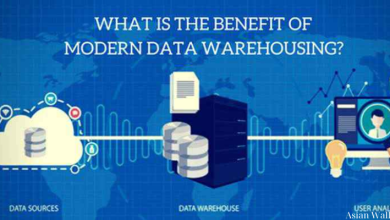Types of Financial Data: A Comprehensive Guide

In the modern financial landscape, data is the backbone that supports analysis, decision-making, and strategy development. Whether you’re a financial analyst, an investor, or a business owner, understanding the various types of financial data is crucial for making informed decisions. This article delves into the different categories of financial data, exploring their sources, applications, and significance in the financial world.
1. Financial Statements Data

Financial statements are fundamental documents that provide a snapshot of a company’s financial health. They include the balance sheet, income statement, and cash flow statement.
Balance Sheet
The balance sheet provides a summary of a company’s assets, liabilities, and shareholders’ equity at a specific point in time. It’s divided into three main sections:
- Assets: Current assets (cash, accounts receivable, inventory) and non-current assets (property, plant, and equipment).
- Liabilities: Current liabilities (accounts payable, short-term debt) and long-term liabilities (long-term debt, pension liabilities).
- Shareholders’ Equity: Common stock, retained earnings, and treasury stock.
Income Statement
The income statement, also known as the profit and loss statement, shows a company’s revenue, expenses, and profits over a specific period. Key components include:
- Revenue: Income from sales or services.
- Expenses: Costs incurred to generate revenue, including cost of goods sold (COGS), operating expenses, and non-operating expenses.
- Net Income: The bottom line, calculated as revenue minus expenses.
Cash Flow Statement
The cash flow statement outlines the inflow and outflow of cash within a business. It is divided into three sections:
- Operating Activities: Cash generated from core business operations.
- Investing Activities: Cash used for or generated from investments in assets.
- Financing Activities: Cash flows related to borrowing, repaying debt, and equity transactions.
2. Market Data: Types of Financial Data
Market data encompasses information related to the trading of securities, including stocks, bonds, commodities, and derivatives.
Stock Prices
Stock price data is crucial for investors and includes:
- Current Prices: The latest trading price of a stock.
- Historical Prices: Past trading prices over different periods.
- Volume: The number of shares traded over a period.
Indices
Market indices like the S&P 500, NASDAQ, and Dow Jones Industrial Average provide a summary of market performance. Indices track the performance of a group of stocks representing a particular sector or the entire market.
Commodities
Data on commodities such as oil, gold, and agricultural products include:
- Spot Prices: Current market prices.
- Futures Prices: Agreed prices for future delivery.
3. Economic Data
Economic data refers to macroeconomic indicators that reflect the overall health of the economy. Key types include:
Gross Domestic Product (GDP)
GDP measures the total value of goods and services produced within a country. It’s an essential indicator of economic performance.
Inflation Rates
Inflation data, typically measured by the Consumer Price Index (CPI) or Producer Price Index (PPI), indicates the rate at which prices for goods and services rise, eroding purchasing power.
Employment Data
Employment reports, such as the unemployment rate and job creation numbers, provide insights into the labor market and economic health.
Interest Rates
Interest rates set by central banks influence borrowing costs and economic activity. Key rates include the Federal Funds Rate in the U.S. and the European Central Bank’s refinancing rate.
4. Company-Specific Data
Company-specific data includes information unique to a particular company, often used for comparative analysis and investment decisions.
Earnings Reports
Quarterly and annual earnings reports provide detailed information about a company’s financial performance, including revenue, net income, and earnings per share (EPS).
Dividends
Dividend data includes:
- Dividend Amount: The payout per share.
- Dividend Yield: The dividend amount relative to the stock price.
- Ex-Dividend Date: The cut-off date to qualify for the dividend.
Insider Transactions
Insider trading data tracks buying and selling activities by a company’s executives and significant shareholders. Such transactions can signal confidence or concern about the company’s prospects.
5. Sentiment Data
Sentiment data captures the mood and opinions of investors and the public about the financial markets or specific securities.
News Sentiment
Analyzing news sentiment involves evaluating the tone of news articles, press releases, and other media. Positive or negative news can significantly impact stock prices.
Social Media Sentiment
Platforms like Twitter, Reddit, and financial forums provide real-time insights into investor sentiment. Analyzing social media can help predict market movements driven by collective investor behavior.
Analyst Ratings
Brokerage firms and financial analysts issue ratings such as “buy,” “hold,” or “sell” on stocks. These ratings are based on in-depth analysis and can influence investor decisions.
6. Alternative Data

Alternative data refers to non-traditional data sources that provide additional insights into financial markets and companies.
Web Traffic
Web traffic data, including visits to a company’s website, can indicate consumer interest and potential revenue growth.
Satellite Imagery
Satellite data can monitor activities such as the number of cars in a retailer’s parking lot, providing early indicators of sales performance.
Credit Card Transactions
Aggregated credit card transaction data offers real-time insights into consumer spending patterns and trends.
7. Risk Data
Risk data is essential for assessing potential threats to investments and financial stability.
Credit Risk
Credit risk data evaluates the likelihood of a borrower defaulting on their obligations. Key metrics include credit scores and bond ratings provided by agencies like Moody’s and Standard & Poor’s.
Market Risk
Market risk data involves the potential for investment losses due to market movements. It includes metrics like Value at Risk (VaR) and beta, which measures a stock’s volatility relative to the market.
Operational Risk
Operational risk data focuses on internal failures such as system breakdowns or fraud. This type of data helps in assessing a company’s internal control effectiveness.
8. Environmental, Social, and Governance (ESG) Data
ESG data evaluates a company’s performance in areas related to environmental sustainability, social responsibility, and corporate governance.
Environmental Data
This includes metrics on carbon emissions, resource usage, and waste management. Companies with strong environmental practices may be favored by investors focusing on sustainability.
Social Data
Social data examines how a company manages relationships with employees, suppliers, customers, and communities. Metrics include labor practices, human rights records, and community engagement.
Governance Data
Governance data assesses the quality of a company’s leadership, internal controls, and shareholder rights. Key indicators include board composition, executive compensation, and transparency.
9. Technical Data
Technical data involves the analysis of market trends and patterns to predict future price movements. It’s primarily used by traders and technical analysts.
Price Patterns
Patterns such as head and shoulders, double tops and bottoms, and triangles are analyzed to predict potential price movements.
Indicators and Oscillators
Technical indicators like moving averages, Relative Strength Index (RSI), and Moving Average Convergence Divergence (MACD) help traders identify trends and potential reversal points.
Volume Analysis
Volume data, which tracks the number of shares traded, is crucial for confirming trends and identifying potential breakout or breakdown points.
10. Regulatory Data

Regulatory data involves information related to compliance with financial regulations and standards.
Filings
Companies listed on stock exchanges are required to file various reports with regulatory bodies like the SEC (Securities and Exchange Commission). Key filings include:
- 10-K and 10-Q Reports: Annual and quarterly financial reports.
- 8-K Reports: Current reports on significant events.
- Proxy Statements: Information on shareholder meetings and voting matters.
Compliance Data
Data on compliance with financial regulations, including adherence to anti-money laundering (AML) laws and Know Your Customer (KYC) requirements, is critical for financial institutions.
Conclusion
Understanding the diverse types of financial data is essential for navigating the complexities of the financial world. Each category of data provides unique insights and, when combined, offers a comprehensive view of market dynamics and company performance. As the financial landscape continues to evolve, staying informed about the various types of financial data will remain a cornerstone of effective financial analysis and decision-making. Whether you’re a seasoned investor or a novice, leveraging these data types will enhance your ability to make well-informed financial decisions.
Conclusion: So above is the Types of Financial Data: A Comprehensive Guide article. Hopefully with this article you can help you in life, always follow and read our good articles on the website: Asian Wallpaper




